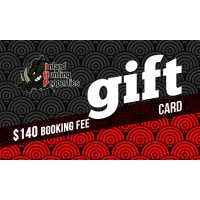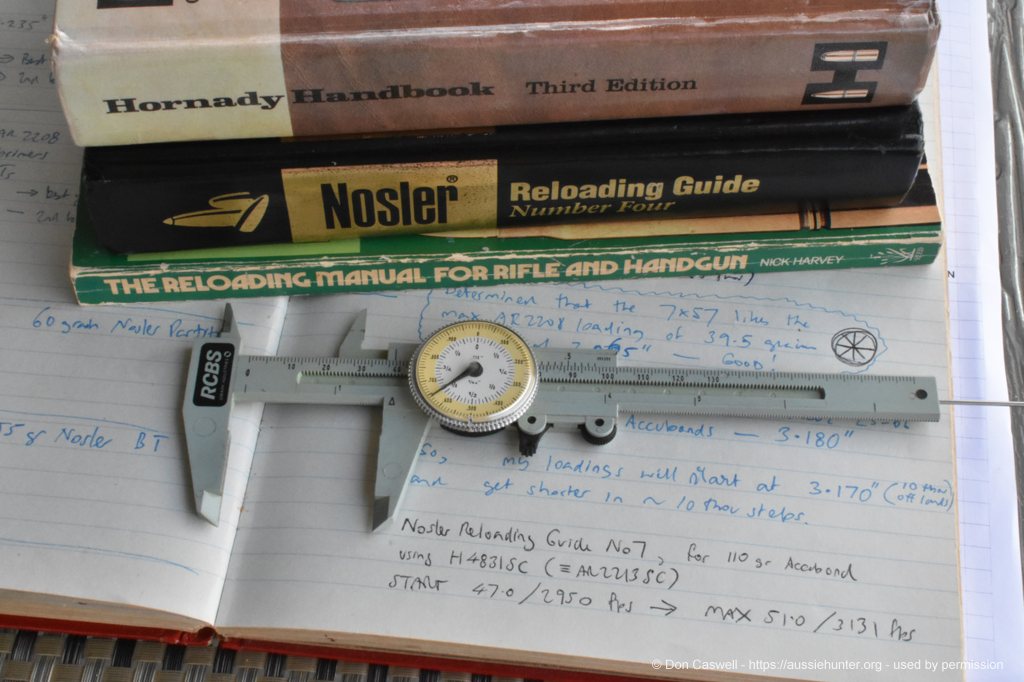
Reloading provides the ability to tailor-make your own ammunition with the projectiles of your choice and obtain improved accuracy at reduced cost. Reloading is an option most hunters consider and many undertake. Don Caswell recounts his journey in reloading and suggests it pays to start simply and work up.
My journey into reloading began a long time ago and took the path most hunters would be familiar with. I had not long bought my first centrefire rifle, a Brno in 223 Remington. The rifle came with a hundred rounds of factory ammo. I was an avid reader of the various shooting magazines and by the time I had fired most of my factory ammo I was keen to try reloading for myself.
I bought some basic reloading gear from a fellow who was trading up. It was a Simplex press and 223 Rem dies. That was it. I visited the local lock & gunsmith shop where the proprietor sold me a can of the appropriate powder (at that stage I did not even know what propellant I should be using), a funnel, some primers and a box of Nosler Zipedo 55 grain projectiles. He was a pleasant old chap and offered to make me a dipper, at no cost, to get me started.
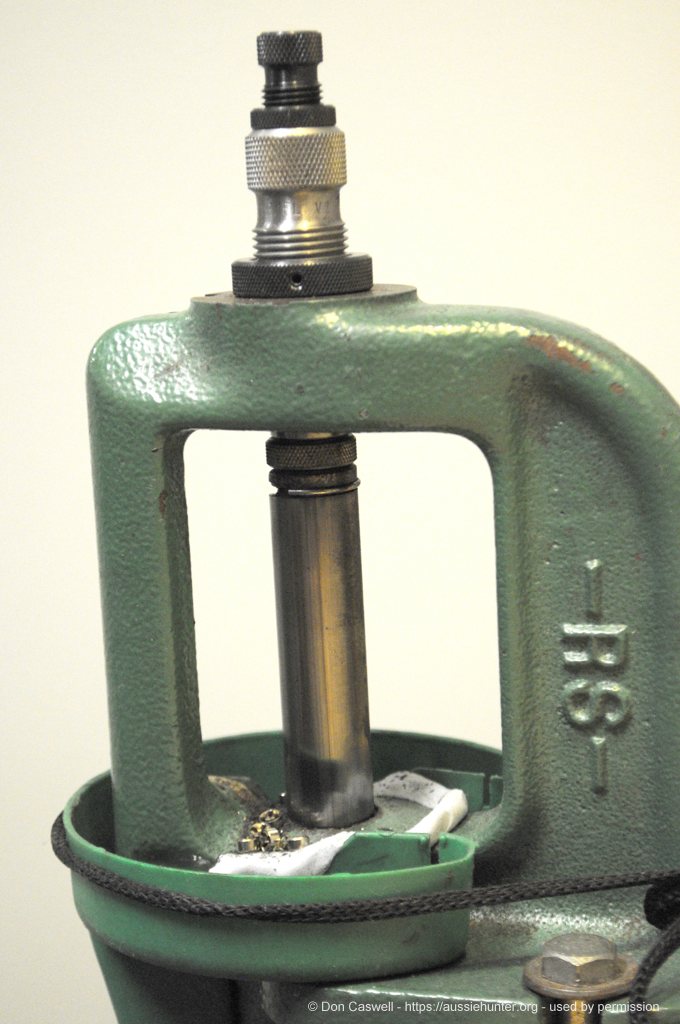
He trimmed down a 303 shell and soldered on a piece of heavy gauge brass wire for a handle. When I collected it from him he gave me some basic advice on reloading and a few tips on getting an accurate powder measure at each scoop. That was to always use the same small, deep bowl and keep it filled to near full. I practiced a few times in his shop with him using his scales to check my throws. It did not take long to establish a technique that gave fairly repeatable results. In hindsight, he had made the dipper such that I could not throw an overcharge. He even engraved the charge weight and powder to be used on the side of the dipper. He was a thorough old chap.
I went home and began to neck size and de-prime my fired cases. There was nearly a disaster straight up. I had neglected to lubricate the case necks. Luckily, no damage had been done and the lock and gun shop was not far away. I made a quick trip and bought some case lubricant. I gave the now successfully de-primed cases a quick wipe over and then used the attachment on the press to prime the cases.
The custom dipper made quick work of charging my first twenty reloads. I then seated the projectiles. At the time I had no means to measure the overall cartridge length and determine where the projectile just met the rifling. The old gunsmith had queried me on seating depth and, obviously detecting that I was clueless, suggested that I load the cartridges to the same length as the factory ammo. Realizing that I had nothing to accurately measure them with he suggested just lining up a reloaded cartridge with factory rounds six inches to either side and balancing a stout wooden ruler across them. Quite a simple and reasonably accurate technique as it turned out.
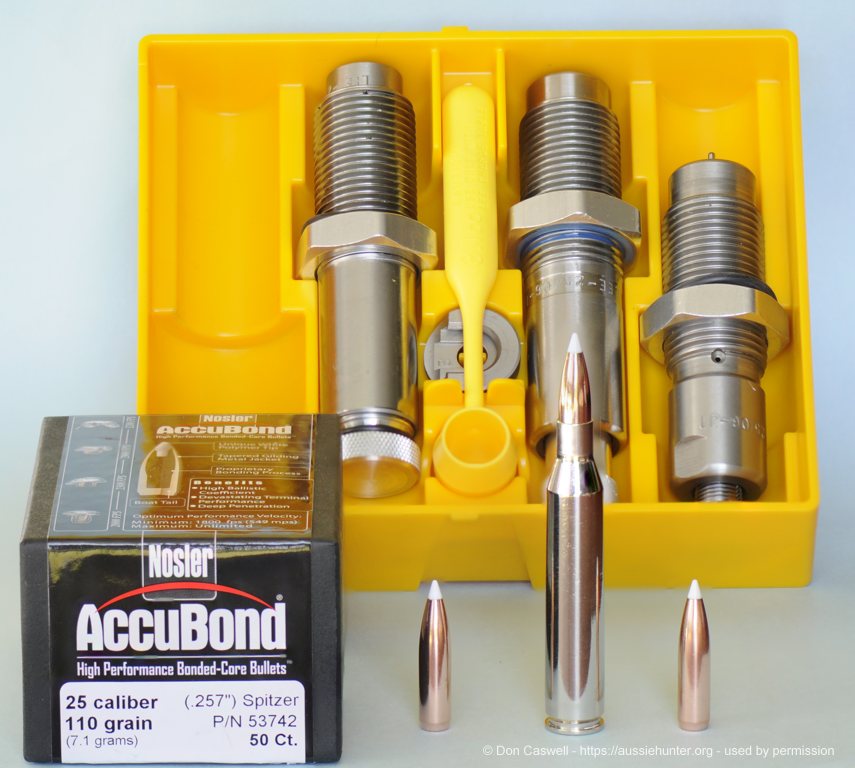
The next Saturday morning I was at the local SSAA range bright and early. I eagerly and quickly fired off most of my rounds at the target. At that point of my career barrel cleaning and cool down periods were not part of my repertoire. I waited impatiently for a cease fire so I could confirm what looked through the scope to be some reasonable groups. From memory they were probably about one and half MOA, but definitely an improvement on what the factory rounds had been delivering. I was stoked!
For more than a decade I continued to use that very basic approach to handloading. Eventually though, I started to appreciate the need for a bit more rigour and finesse. My reloading has progressed quite a ways since those days and I continue to learn and improve on my technique as I go. I began to acquire a bit more gear and learnt how and why to use it. Now my reloading kit has expanded to include a case tumbler, scales both manual and electronic, callipers, neck chamfering tools, primer pocket and flash hole reamers, case trimmers, priming tools and sundry other bits and pieces, all of which get used.
Occasionally at the rifle range new shooters ask for some advice on getting started with reloading. That requires some questions to be answered.
The first question is what the calibre and rifle is. Then, we need to determine the main purpose of the rifle and ammo combination. For hunters looking to shoot a range of game, from small to large, the choice of projectile has to be tailored to the largest animal that will be hunted. Obviously, if a hunter will be chasing animals from rabbits to deer then the projectile has to be suitable for use on deer. You would never take a shot at deer with a light varmint bullet. This is particularly relevant with popular high velocity calibres like the 243 Winchester that cover that broad range of quarry nicely. Sometimes, new shooters do not appreciate the importance of bullet weight and construction that must be considered and require some coaching.
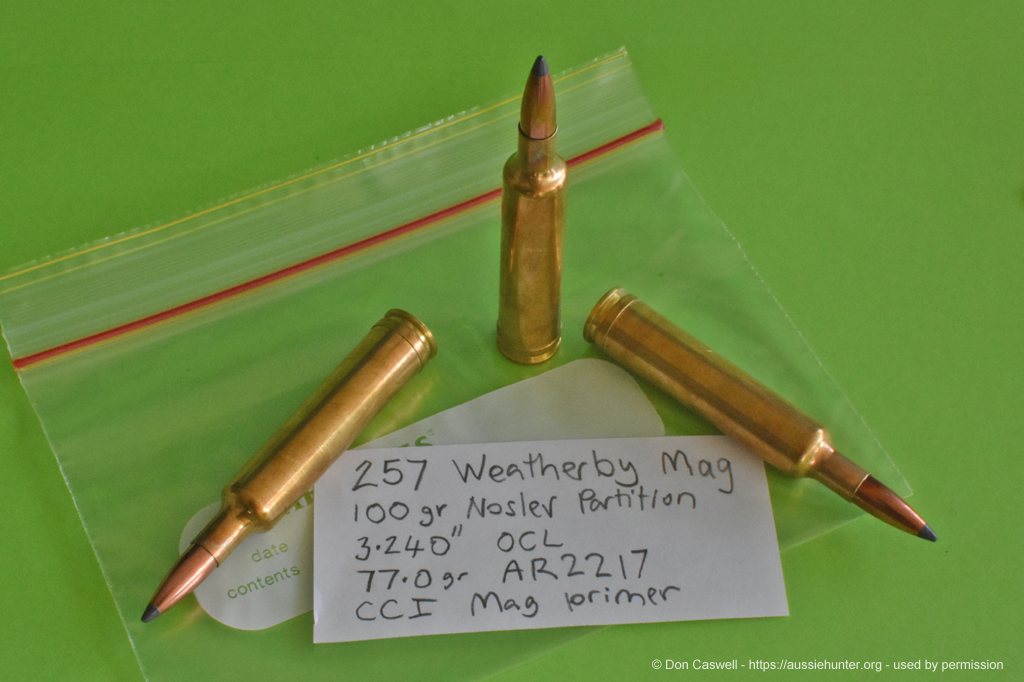
For most shooters just starting to reload, the powder dipper approach is quite reasonable. Some reloading dies, like those by Lee, come with the full three die set and a suitable dipper. It needs to be stressed that the dipper should only be used on specified powders. You cannot blindly use a dipper for any and every propellant.
For more finesse a set of scales is required. I am still using the RCBS balance scale I bought second hand of some bloke more than thirty years ago. I do have a set of modern electronic scales, but I find most times I just reach for my old balance scales. Electronic scales can take a while to warm up and need to be carefully monitored for drift and recalibrated regularly. The old school balance scales are a lot more forgiving and are not prone to drift.
A few standard weights are useful for checking any sort of scales before measuring out charges. Projectiles are manufactured to very tight tolerances and can be used to check your balance. I find the 17 calibre 25 grain V-Max quite useful for that. If the scales measure one of those at 25 grains then I am confident in doing a run of 27.0 grain powder charges.
Likewise three of them weigh 75 grains which is very close to the powder charges used in my 458 Winchester Magnum and 257 Weatherby Magnum.
If you are going to be loading in larger quantities and want a bit more precision than a dipper will give you then a powder thrower is required. My powder thrower came with the scales and I have had a lot of use out of it. Powder throwers require a consistent technique to maximise their accuracy, but that is not so difficult to master. I have carefully checked my powder thrower for consistency and was more than happy. Even with a fairly notchy powder like AR2208 it produced a very tight band of thrown weights. All were within ± 0.2 grains. With finer powders, like Benchmark for example, it is even better.
To consistently get MOA groups, or smaller, then a few refinements in reloading gear and technique are required. One of the first things you need to do is to adjust the seating depth of the projectiles you are reloading. Bullet seating depths, for the beginner, should be the standard SAAMI dimensions found in factory ammunition. However, it is not difficult to do better than that.
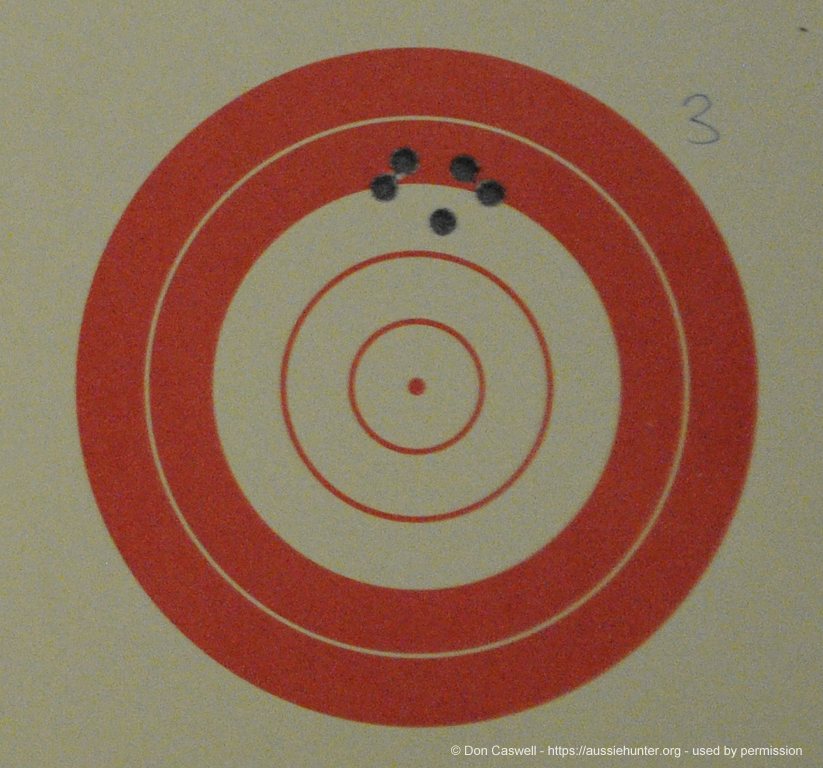
The depth at which the projectile just touches the lands can be easily determined by using a projectile loosely seated in a fired case that has not yet been resized. By pushing the case neck firmly against a flat, hard surface a flat spot is created which is sufficient to hold the otherwise loose projectile. Apply some marking pen to the projectile, insert the projectile in the case neck and then chamber the round. The bullet will contact the lands and be pushed back into the case, leaving a clear mark on the inked surface. On ejecting, the bullet may well be moved, or even remain in the barrel from where it can be dislodged by a gentle tap with a cleaning rod, but the scratch mark in the ink will be the reference line.
Despite the fact that benchrest shooters often seat their projectiles so that they engage the rifling on chambering, hunters should always seat their projectiles at least 20 thousandths of an inch short of the lands. This avoids the risk of the projectile engaging tightly and being pulled from the case if the shot is not taken and the unfired cartridge ejected. The best seating depth for your projectile needs to be found by trial and error, adjusting the seating depth by ten or twenty thou at a time. Typically, the sweet spot is somewhere in the range of 20 to 70 thou short of the rifling, but sometimes it can be even more.
Using simple gear and techniques, along with staying a grain or two below the listed maximum charges shown in the reloading guides, will be quite adequate for a lot of hunters. This is particularly so when reloading for the more standard calibres such as 223 Rem, 22-250 Rem, 243 Win, 308 Win and the like. I would suggest that anybody keen to reload should cut their teeth on these standard and more forgiving cartridges. It would be unwise to begin your reloading career with a hot magnum straight up.
For decades I reloaded a range of different calibres using only neck sizing dies, powder balance scales and a thrower, and seating bullets to factory dimensions. As I sought to achieve and get better than MOA accuracy it was necessary to do more than that. For hunters using sporter style rifles in the field a rifle that achieves 2 MOA, or better, is perfectly adequate. Few shooters can shoot better than that in the bush even when armed with a rifle capable of shooting tiny groups off the bench.
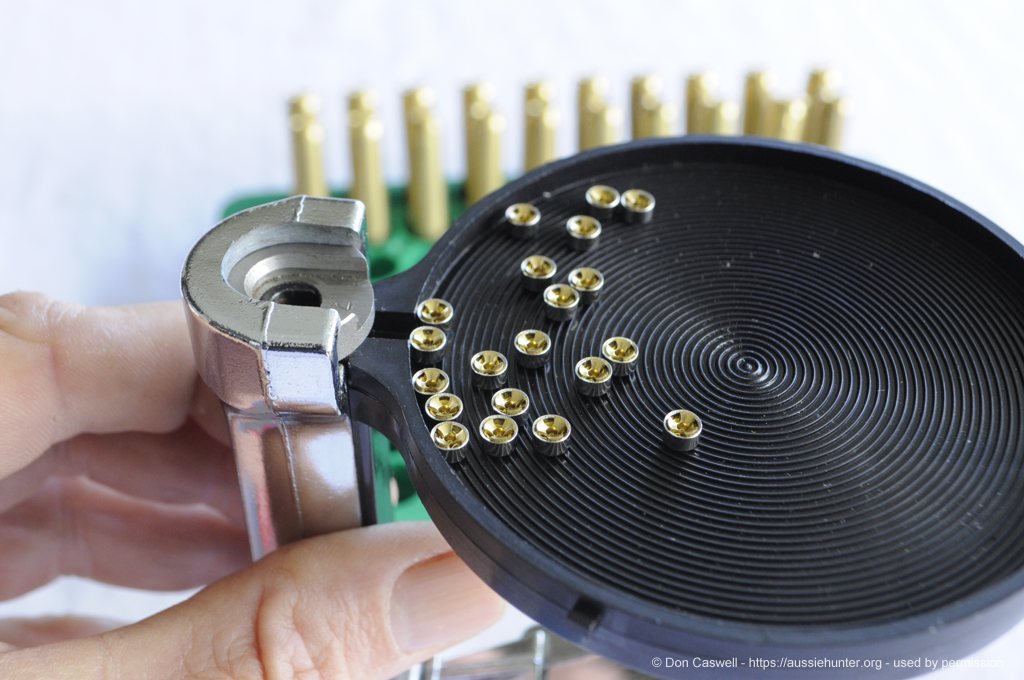
It goes without saying that once you start seeking to achieve sub MOA accuracy then you need to be prepared to do a lot more testing of different loading configurations. Another essential is keeping good notes about your test work and clearly differentiating each batch. During load development I typically do test lots of three rounds at a time which I place in zip lock sandwich bags along with a label clearly identifying the load parameters.
In recent years as I began loading hotter magnums, like the 257 Weatherby, seeking maximum performance and sub MOA accuracy, I have had to get more precise in my reloading technique and measurement. That required the addition of a micrometer accurate to ten thou of an inch so that I could better track the expansion of the belt diameter on firing. I also needed to begin checking case length at each reloading, having found as others before me have, that hot magnums can produce case length growth to exceed the maximum shell length in as few as three firings.
Handloading hunting ammo can be a lot of fun and very rewarding. And of course anything that contributes to sure, one-shot kills on game is worth pursuing. While it is good for new chums to discuss and work out their reloading technique with a buddy, keep in mind that reloading is not a social event. You are dealing with powerful explosives and there is a significant risk of rifle damage and personal injury if you make a mistake. My personal policy for driving a vehicle, shooting and reloading is to be at zero alcohol level and I would recommend that to anyone. Save that nice cold beer, or glass of red, until the job is done and dusted.
https://vps.westernhunting.com.au/the-bullet-reloading-journey#sigProId7a7b2a0d8d




